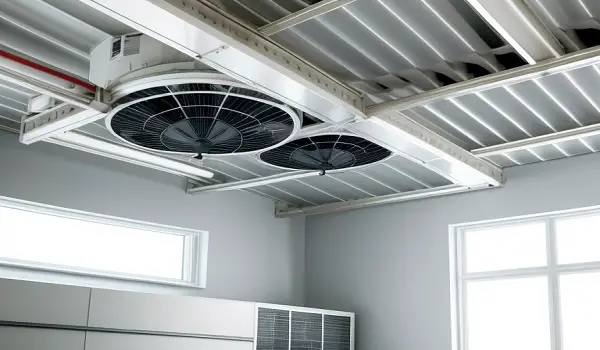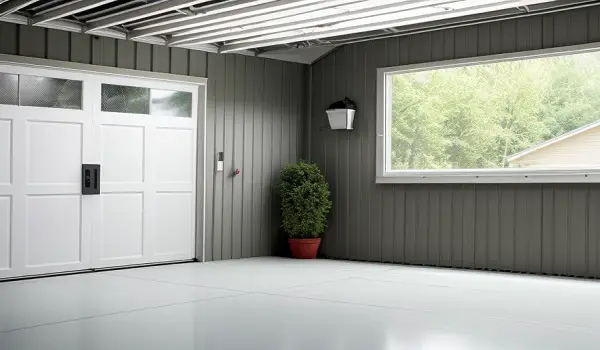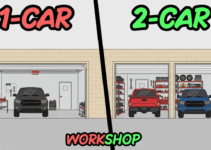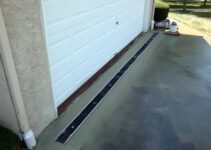Garage ventilation is a vital consideration that often goes overlooked in many households. The importance of proper ventilation in your garage cannot be overstated, as it plays a critical role in maintaining a safe and healthy environment.
Adequate ventilation helps to expel harmful gases, prevent moisture accumulation, and regulate temperature, ensuring that your garage remains a functional and secure space. In this article, I’ll share my knowledge with you, so you can keep your garage safe, comfortable, and free of fumes.
The Benefits of Garage Ventilation
The significance of garage ventilation extends beyond mere convenience. While it may seem like a trivial concern, neglecting proper ventilation can lead to serious consequences for both your health and the structural integrity of your garage.
Harmful gases and fumes emitted from vehicles, chemicals, and other stored items can pose health risks to anyone who enters the garage, and they can also damage your possessions over time.
Additionally, moisture buildup can result in the growth of mold and mildew, jeopardizing the condition of your belongings and the garage itself. Adequate ventilation helps mitigate these risks, providing a safer and more comfortable environment for both your family and your belongings.
You may also like:
How to Keep Garage Cool in Summer
Different Types of Garage Ventilation
There are two main types of garage ventilation: natural and forced air.
Natural Garage Ventilation

Natural garage ventilation relies on passive airflow methods to circulate air within the garage. While it is a cost-effective solution, it may not always effectively eliminate harmful gases and fumes.
Open windows and doors serve as the simplest method to facilitate natural ventilation, allowing fresh air to enter and stale air to exit.
Installing vents in the walls or ceiling of the garage can also promote airflow. Additionally, fans can be strategically placed to enhance the movement of air within the space.
Forced Air Garage Ventilation

Forced air garage ventilation employs fans to actively circulate air. This method is more efficient at removing harmful substances from the garage environment, but it comes at a higher cost in terms of installation and operation.
Exhaust fans, installed in the ceiling, effectively expel stale air and fumes to the outside. Whole-house ventilation systems, which extend their benefits to the entire home, including the garage, offer a comprehensive solution for maintaining healthy indoor air quality.
Choosing the Right Garage Ventilation System
Selecting the appropriate ventilation system for your garage requires careful consideration of several factors.
- Size of Your Garage: The size of your garage directly influences the ventilation system’s capacity. Larger spaces demand more powerful systems to ensure effective air circulation and purification.
- Climate You Live In: The climate in which you reside impacts the specific challenges your garage ventilation system needs to address. Hot climates necessitate systems capable of dissipating excess heat, while cold climates require systems that prevent moisture buildup to avert mold and mildew growth.
- Your Budget: Garage ventilation systems vary widely in cost, ranging from affordable options to more elaborate setups. Assess your budget and choose a system that strikes a balance between functionality and affordability.
7 Effective Garage Ventilation Ideas
To help you ensure that your garage remains a functional and pleasant space, here are seven garage ventilation ideas to consider:
1. Open Windows and Doors

One of the simplest and most effective ways to naturally ventilate your garage is by opening windows and doors whenever possible.
This basic approach allows fresh air to flow in, displacing stagnant air and odors. Whether it’s a mild breeze or a gust of wind, the circulation of air can do wonders for maintaining a breathable and pleasant atmosphere within your garage.
2. Install Vents
Vents strategically placed in the walls or ceiling of your garage offer an efficient means of regulating airflow.
There exists a wide array of vent types, each designed to suit particular requirements. By installing vents, you can facilitate the inflow of fresh air while encouraging the exit of stale air, creating a constant exchange that helps maintain optimal air quality.
3. Employ Fans
The utilization of fans can significantly enhance the air circulation in your garage. Fans come in various forms, each catering to specific needs.
By setting up fans, you can better distribute air throughout the space, leading to improved air quality and a cooler ambient temperature. This approach is particularly beneficial in garages lacking windows or adequate natural ventilation.
4. Integrate an Exhaust Fan
Exhaust fans offer an effective solution for expelling stale air and harmful fumes from your garage. Installed in the ceiling, these fans serve to direct unwanted gases outside, significantly enhancing air quality.
This approach is particularly crucial if your garage is used for activities such as painting, welding, or working with chemicals, as it prevents potentially hazardous substances from accumulating.
5. Embrace Whole-House Ventilation Systems
For those seeking a comprehensive solution, whole-house ventilation systems offer a holistic approach to indoor air quality.
These systems, while more expensive, extend their benefits to the entire home, including the garage. By employing a whole-house ventilation system, you can ensure consistent air exchange and pollutant removal, promoting a healthier environment for both your living spaces and your garage.
6. Harness the Power of Nature
Planting trees around your garage not only enhances the aesthetic appeal of your property but also provides a natural shade that helps regulate temperature.
By mitigating the effects of direct sunlight, trees contribute to maintaining a cooler garage space. Moreover, they act as a natural air purifier, absorbing pollutants and promoting cleaner air quality.
7. Utilize Insulation
Insulating your garage can have a substantial impact on its temperature regulation. Proper insulation prevents excessive heat from infiltrating during summer months and retains warmth in colder periods.
By maintaining a consistent temperature, insulation reduces the need for constant ventilation and minimizes energy consumption, resulting in a more comfortable and energy-efficient garage.
Installing a Garage Ventilation System
The installation of a garage ventilation system is a task that demands professional expertise. Improper installation can lead to suboptimal performance, increased energy consumption, and potential safety hazards.
Enlisting the services of a qualified professional ensures that the system is set up correctly, guaranteeing its effectiveness in maintaining a healthy garage environment.
Maintaining a Garage Ventilation System
Proper maintenance is essential to ensure the continuous operation of your garage ventilation system. Regular cleaning of vents and fan blades prevents obstructions that can impede airflow.
Inspections for leaks and damage help identify and address issues before they escalate. By adhering to a routine maintenance schedule, you can extend the lifespan of your ventilation system and optimize its performance.
Common Problems with Garage Ventilation and Their Solutions
Even with proper maintenance, ventilation systems may encounter issues over time. These problems can include reduced airflow, strange odors, and unusual noises.
If you experience any of these problems, it’s essential to consult a professional technician to diagnose and rectify the issue promptly.
Conclusion
In conclusion, the significance of garage ventilation cannot be underestimated. It is a fundamental aspect of maintaining a safe, healthy, and functional environment for your family and your possessions.
By understanding the benefits of proper ventilation, exploring the different types of systems, making informed decisions based on factors such as size, climate, and budget, and ensuring professional installation and regular maintenance, you can effectively create an optimal garage space that prioritizes the well-being of your loved ones and safeguards your valuable belongings.
Remember, investing in a well-designed and maintained garage ventilation system is an investment in the health and safety of your family.


